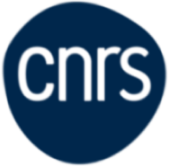Should we increase or decrease public debt? Optimal fiscal policy with heterogeneous agents
Résumé
We analyze optimal fiscal policy in a heterogeneous-agent model with capital accumulation and aggregate shocks, where the government uses public debt, capital tax and progressive labor tax to finance public spending. First, he existence of a steady-state equilibrium is proven to depend on three conditions, which have different economic interpretations: a Laffer condition, a Blanchard-Kahn condition and a Straub-Werning condition. First, the equilibrium can feature both a positive level of public debt and capital tax at the steady state, to correct for non-optimal private saving. Second, the optimal public debt increases after a positive public spending shock when its persistence is low, whereas it decreases when its persistence is high, due to a tradeoff between consumption smoothing and the reduction of distortions. We show that our results hold in a quantitative heterogeneous-agent model, where the optimal dynamics of the whole set of fiscal tools is analyzed. The general model also provides new results on optimal tax progressivity and the dynamics of labor tax.
Origine : Fichiers produits par l'(les) auteur(s)

